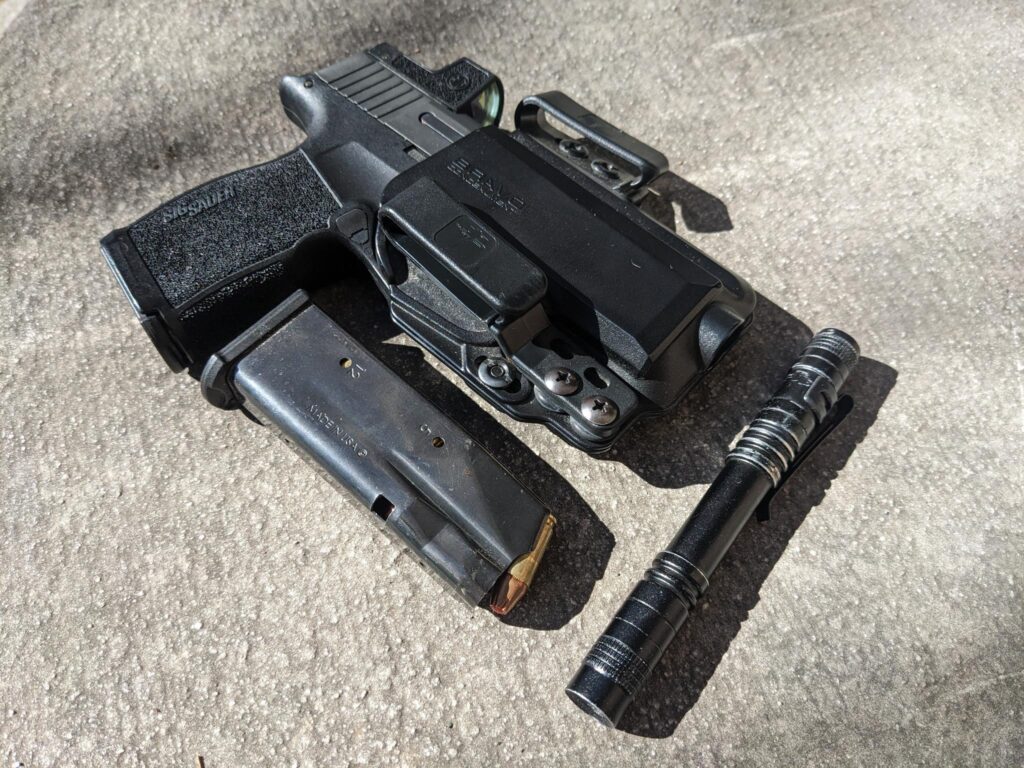In the nearly 20 years I have owned guns, I have had a range of different gear and firearms. The first gun I bought was a 9mm Hi Point Carbine and I paid $100 for it. It was not exactly ideal for self defense but not knowing much about guns and not having a lot of money, it made a lot of sense at the time.
As the years have rushed by I have gone through just about any phase you can think of when it comes to buying and trying the tools of self defense. I have carried a number of different handgun brands, actions, calibers and sizes. I have tried just about any holster you can imagine including, yes, even a shoulder holster.
Most of the money I have spent over the years has ended up “wasted”. I have a graveyard of discarded holsters. Most of the handguns I own now I would not carry. Then there are the wasted belts, the magazine carriers, the training tools, odd magazines for guns I don’t even own anymore, and even a few abandoned calibers.
It took me a long time to figure out that there really are only a couple useful factors when deciding if I should consider spending more money in the name of self defense. Those factors are “efficiency” and “consistency”. In the context of self defense, efficiency and consistency are critical principles that help us be as prepared as possible to engage in a life and death fight with an attacker. Efficiency means hopefully being the first to deliver an effective blow in the fight. Consistency is the principle that helps us to learn and be able to rely on our tools and skills in a dynamic critical incident. Any new tool in my plan needs to first be able to be efficient and consistent with what I know about using a firearm in self defense.
Developing a sense of what is actually likely to be efficient takes time and experience. That experience should be training and it should be training in context. A fancy gadget that looks cool on instagram may not actually stand up to the rigors of a defensive handgun class or a combatives course. In this sense, money spent on good training may actually help save you from buying a bunch of things that will never get used in the real world.

Understanding consistency also comes from experience. I started with a basic holster in the 3 o clock position on my hip. After trying a lot of different carry positions over the years I have learned that the optimal position for myself is still the same place that I started. I can trust that this position works across the most number of circumstances for me.
So when it comes time to consider updating any gear I have something useful to base my decisions on. I have learned how to evaluate the usefulness of an item usually just by looking at it. This is starting to save me some real money now, as the number of pieces of gear I discard is slowing down.
There is a real urge to buy our way into a good self defense plan. The truth is that the useful number of tools is actually not that many, it’s far more important that you spend time and money developing an understanding of the fight and the skills to win that fight.
Nearly 20 years after I bought my first gun, my best recommendation for almost any person who is carrying a gun for self defense is a good quality 9mm striker fired handgun, a quality inside the waistband holster with a somewhat rigid belt, a handheld flashlight and, depending on your attire and habits, perhaps 1 extra magazine.
Over time one might decide that one handgun model is easier to shoot than another, or that a specific holster design might be easier to conceal than another, and perhaps some quality pepper spray. Beyond these basics there is little else I’d recommend for 99% of people who carry a concealed handgun. Spend your extra money on training.


